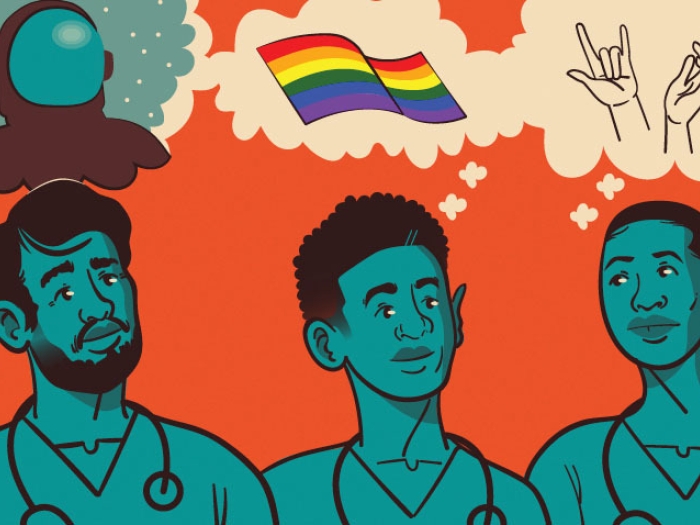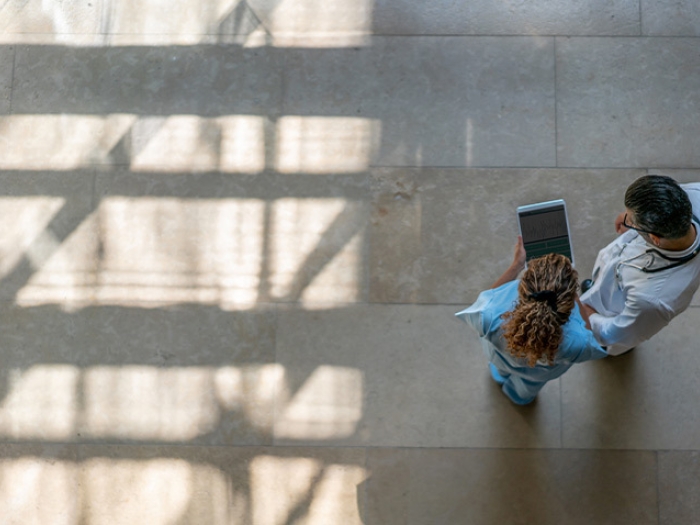When students of medicine, nursing, dentistry, pharmacy and social work carry out patient care via group simulations, a new understanding of one another’s roles results.
7:00 AM
Author |
The scenario was complex and at times chaotic: A mannequin "patient" lay unconscious in a hospital bed inside a simulation lab where a group of students had gathered to assess the situation.
MORE FROM THE LAB: Sign up for our weekly newsletter
The patient's vital signs began to decline, leaving the team and actors portraying family members to discuss whether the patient had a do-not-resuscitate order. The actors, as any loved ones would, became agitated and distressed as the case unfolded.
How would a group of budding professionals (students of medicine, nursing, dentistry, pharmacy and social work) react?
That's the foundation of a course at the University of Michigan designed to foster cross-disciplinary collaboration. The interactive structure helps participants understand the roles of their peers in other health care sectors — knowledge that's crucial to providing ideal care.
After all, "you can't have a successful baseball team with people who haven't played together before," says Gundy Sweet, Pharm.D., a clinical professor of pharmacy at the University of Michigan who helped develop the class.
Here, she adds, "this is not sandbox teamwork; this is the real world."
Having recently completed its third year, the graduate-level course known as Team-Based Clinical Decision-Making continues to evolve. A clinical simulation was added this year to allow students to practice teamwork skills in a situation with more urgency.
And some actual patients were also involved; U-M's School of Social Work recently videotaped cancer patients who spoke about the value of cooperation among their care teams.
Such methodology is effective: Students improved their knowledge and perception of professional roles, according to data published in the Journal of Interprofessional Education & Practice. The effort has also received recognition at U-M through the Provost's Teaching Innovation Prize.
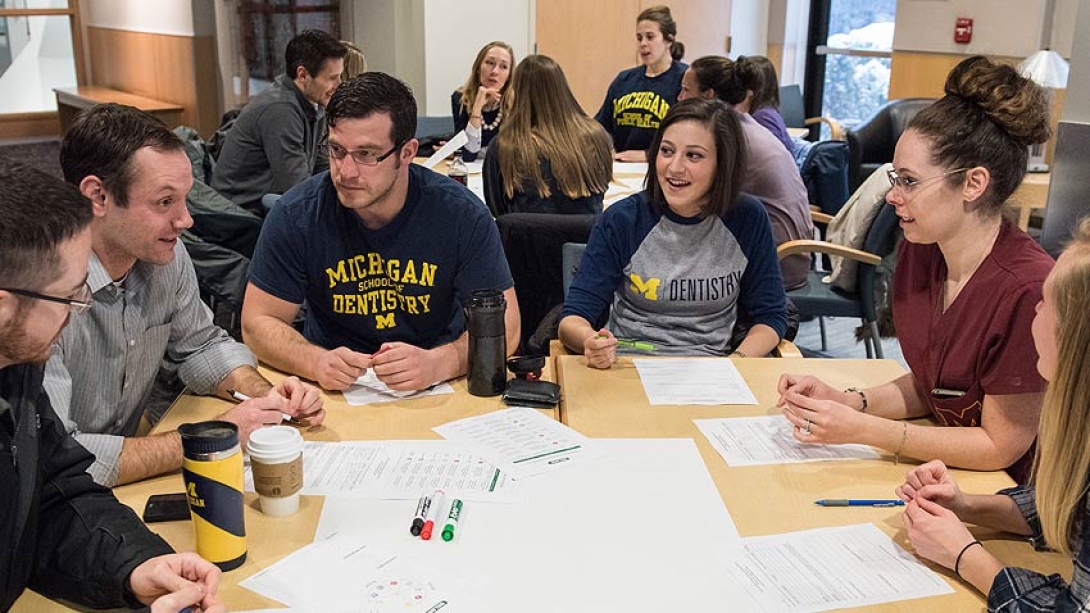
The class — which enrolls about 300 students each year — is required for U-M dental and pharmacy students as well as for some tracks in advanced practice nursing and social work; it's an elective for those in medicine. Sweet leads the 10-member faculty team that teaches the course.
She spoke more about the curriculum:
What inspired you to create this course?
Sweet: When our students enter into practice, they're immediately thrown into teams where they have to provide care — and yet we educate everybody in silos. How can we possibly understand what our team members can contribute and how we can best work together when a clinical setting is the first time we're seeing each other?
Nationally, there have been efforts to push for interprofessional education (IPE). This idea has been around. But accrediting bodies in more recent years have started to incorporate IPE into their standards for accreditation. That put a different light on it.
In 2014, our health science deans said: "We really want to see an IPE offering happening in the next year." A colleague and I sat down and said: "What can this look like?"
How is the class structured?
Sweet: We meet winter term for two hours weekly. Because we have about 320 students enrolled in the class, we have five classrooms running simultaneously. We have eight to 10 teams in each classroom. Every team has students from at least four disciplines, and they stay together for the entire semester.
Interprofessional faculty teams co-teach throughout the term, starting with a two-week intro about the basics of teamwork and collaboration. Students then move into what I call the "round-robin," physically rotating into a different building every two weeks — the medical school, the nursing school and so on.
There's a lot of moving parts, but that was intentional: to get students into the physical spaces where their peers spend countless hours.
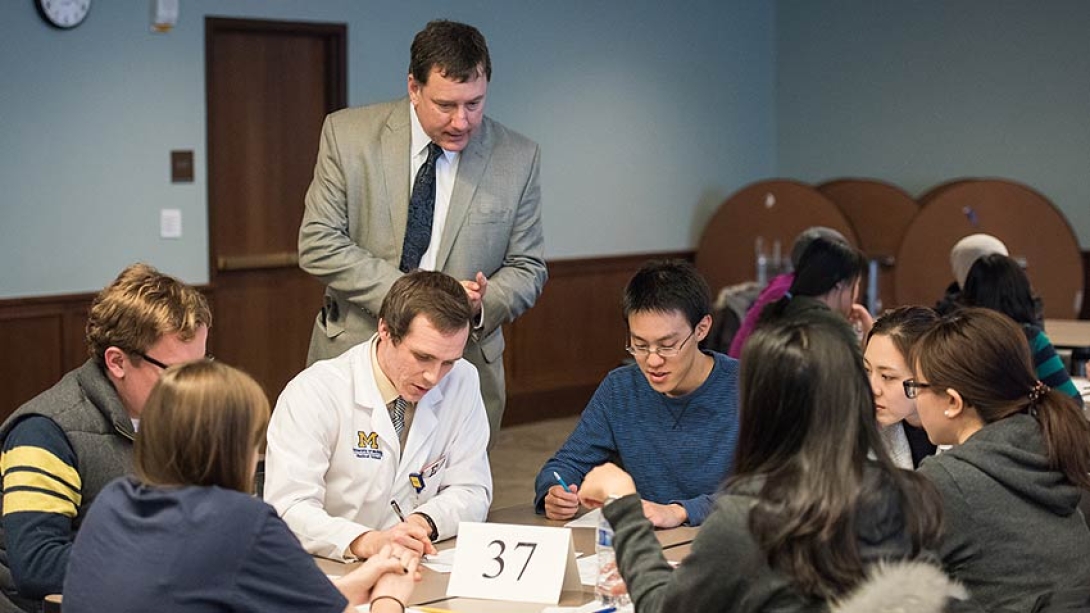
How do you evaluate student progress?
Sweet: We don't have exams. It's not knowledge-based. They have pre-work before each class to provide context for whatever the topic is, then there's an in-class assignment they complete as a team.
SEE ALSO: What the Michigan Med School Admissions Team Looks for on Applications
Each round has different themes. We might ask how you manage pain in someone with a substance-use disorder during the pharmacy segment. A medical case could involve handoff of care. In the social work rotation, we may examine the cultural influences on decision-making.
Students spend two hours each week working through a case, and then the faculty will do a debrief to pull it apart. We don't want the class to be about coming up with the right answer; it's about working together to develop a care plan.
It doesn't matter if you're the one wearing a white coat or not; everyone on this team has something to contribute. Your patient will benefit if you allow everyone to contribute.Gundy Sweet, Pharm.D.
Why is it important to foster cross-disciplinary teamwork?
Sweet: Many of our students are used to working on teams — but typically with people who are just like them. While the pharmacy curriculum is largely team-based learning, for example, you don't get the diversity of thought on how different disciplines approach patient care.
Here, everyone is being taught to listen to each other instead of relying on a hierarchical framework. This is what we want them to realize: It doesn't matter if you're the one wearing a white coat or not; everyone on this team has something to contribute. Your patient will benefit if you allow everyone to contribute.
The other thing we like them to comprehend are the potential gaps or overlaps in care, the times when we all think someone else is doing something and, in fact, nobody does it.
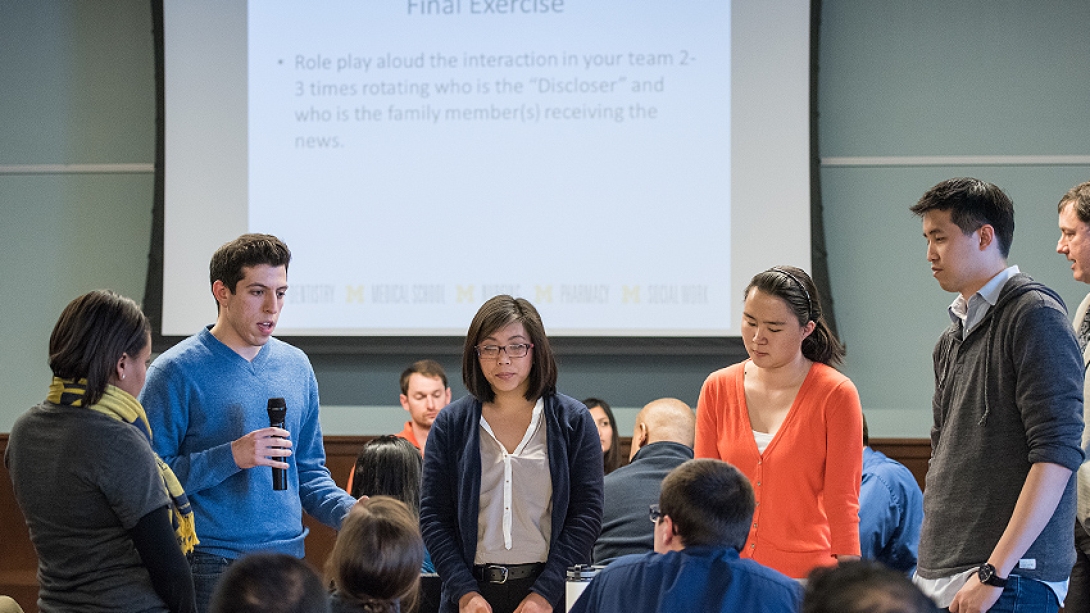
What's it like to see students from different fields join forces?
Sweet: That, to me, is one of the most rewarding parts. Because it's all team-based work, the class is really loud. It's fun to see that energy.
SEE ALSO: The More Doctors Interact, the Better Their Patients Do
For pharmacy students, this is their last didactic semester before they enter a year of clinical rotations, so they're learning how to be the voice of their professions. You might have been able to be quiet in a classroom exercise with five pharmacy students — here, if you're the only voice representing pharmacy and you're quiet, that element isn't being addressed in the patient's care.
They also are making connections and getting rid of mysteries like, "What does a social worker do?" By the end of the course, they're saying, "Wow, I don't know how I'm going to do my job without a social worker."
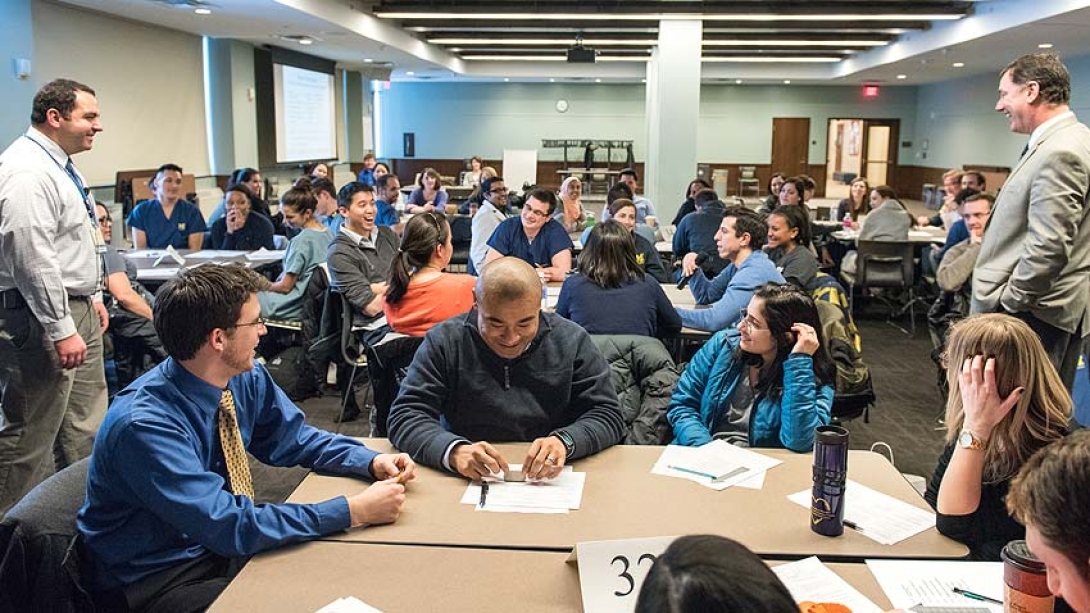
What do you want participants to gain from the class?
Sweet: At the beginning of the semester, students need to identify a personal goal and what they want to teach their teammates about their discipline. We have them think about how they behave and how their team is working. In one of their final assignments, we ask them to reflect on their own growth.
One student in the advanced practice nursing program wrote: "This class made me more comfortable with teamwork and sharpened my ability to share my own knowledge." I think building that confidence is a huge gain.

Explore a variety of healthcare news & stories by visiting the Health Lab home page for more articles.

Department of Communication at Michigan Medicine
Want top health & research news weekly? Sign up for Health Lab’s newsletters today!
